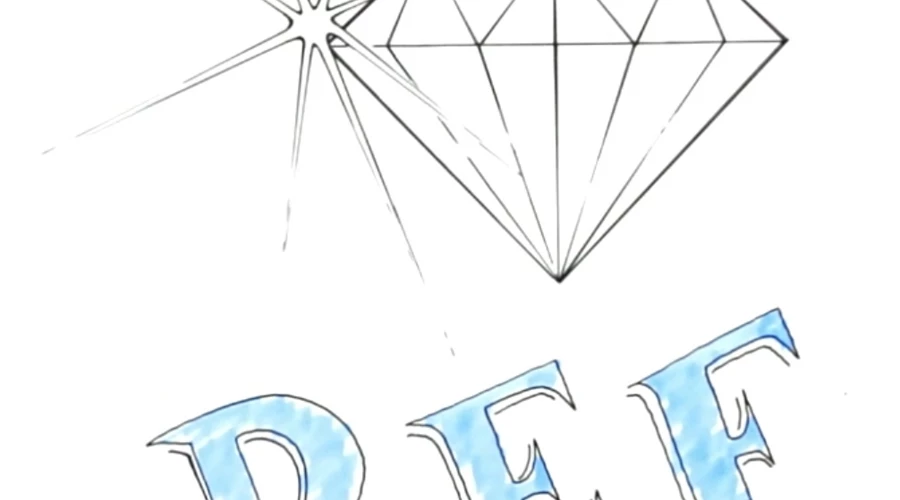Sign up for our Newsletter
Colour Grade
All diamonds are graded on their colour - or rather, lack of colour. The less colour a diamond has, the more highly prized and valuable it is. Because diamonds are natural substances, they can vary greatly in colour from clear to shades of yellow or even brown.
- The colour grade tells you how close to colourless a diamond is
- Diamonds with less colour are more valuable and rare
- Diamonds naturally range in colour from clear to shades of brown/yellow
The presence of colour in a diamond is graded using letters, with D, E and F being reserved for diamonds possessing the very best colour, i.e. colourless. The grading scale runs all the way to Z and any diamond displaying a stronger colour than this is classed as fancy coloured, along with diamonds in other colours such as pink and blue.
Colour Chart
| Colourless | ||
|---|---|---|
 |
 |
 |
| D | E | F |
| Near Colourless | |||
|---|---|---|---|
 |
 |
 |
 |
| G | H | I | J |
Did You Know?
You’ll never find a diamond with a colour grade of A, B, or C. That’s because in the early days of diamond grading several conflicting grading systems used the letters A, B and C along with numbers or Roman numerals. When the GIA introduced their colour grading scale, they started it at D to avoid any confusion with these earlier grades.
To determine the colour grade, gemmologists carefully examine every diamond under controlled lighting conditions, comparing it with a "paint chart" set of diamonds called master-stones, which are perfect examples of the best possible colour in each grade.
Colour is easier to detect when a diamond is laid face down because the closeness of the facets greaten the effect. When a diamond is face up and especially when it’s placed into a setting, it’s almost impossible to tell the difference between one colour grade and the next. This means you can get excellent value by choosing a stone in the near-colourless range (G-J) as it will still look colourless to the unaided eye.
Colour Guide
| D | Absolutely Colourless | Extremely rare diamond with no trace of colour. The highest grade available. |
| E - F | Colourless | Extremely faint traces of colour detectable only by an experienced gemmologist. Appears colourless and indistinguishable from a D grade to the unaided eye. Very rare and valuable. |
| G - H | Near-colourless | Very faint tint appears colourless to the unaided eye except when directly compared with stones of a higher quality. This grade offers excellent value. |
| I - J | Near-colourless | Faint tint only noticeable when directly compared with stones of a higher quality. An excellent choice grade which balances budget and beauty. |
| K - Z | Faint Yellow | Colour is visibly noticeable. We do not offer stones of this quality. |
We Say
Along with the cut grade, colour has a big impact on a diamond’s beauty but is still very difficult to detect in grades G-J. Consider dropping a colour grade for a diamond that’s easy on your wallet as well as your eyes.
-
Ethically Sourced Diamonds
-
Handmade in the UK
-
FREE Shipping Worldwide
-
60 Day Returns




